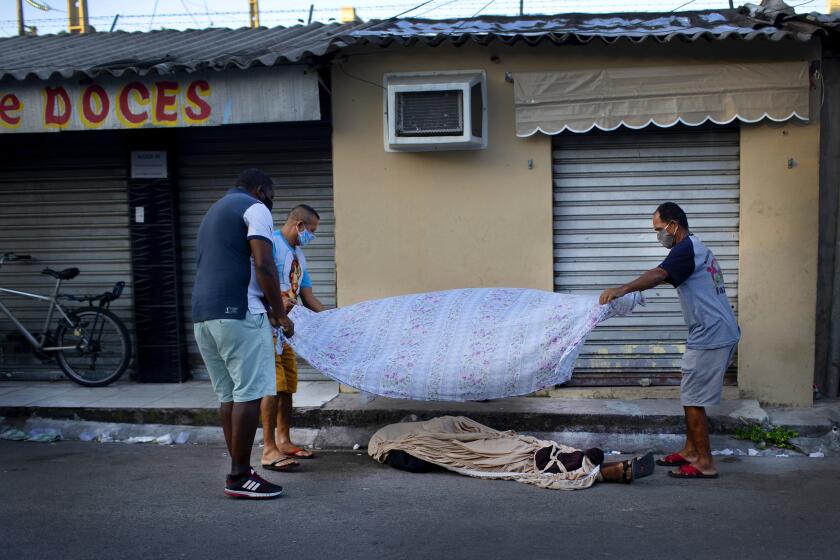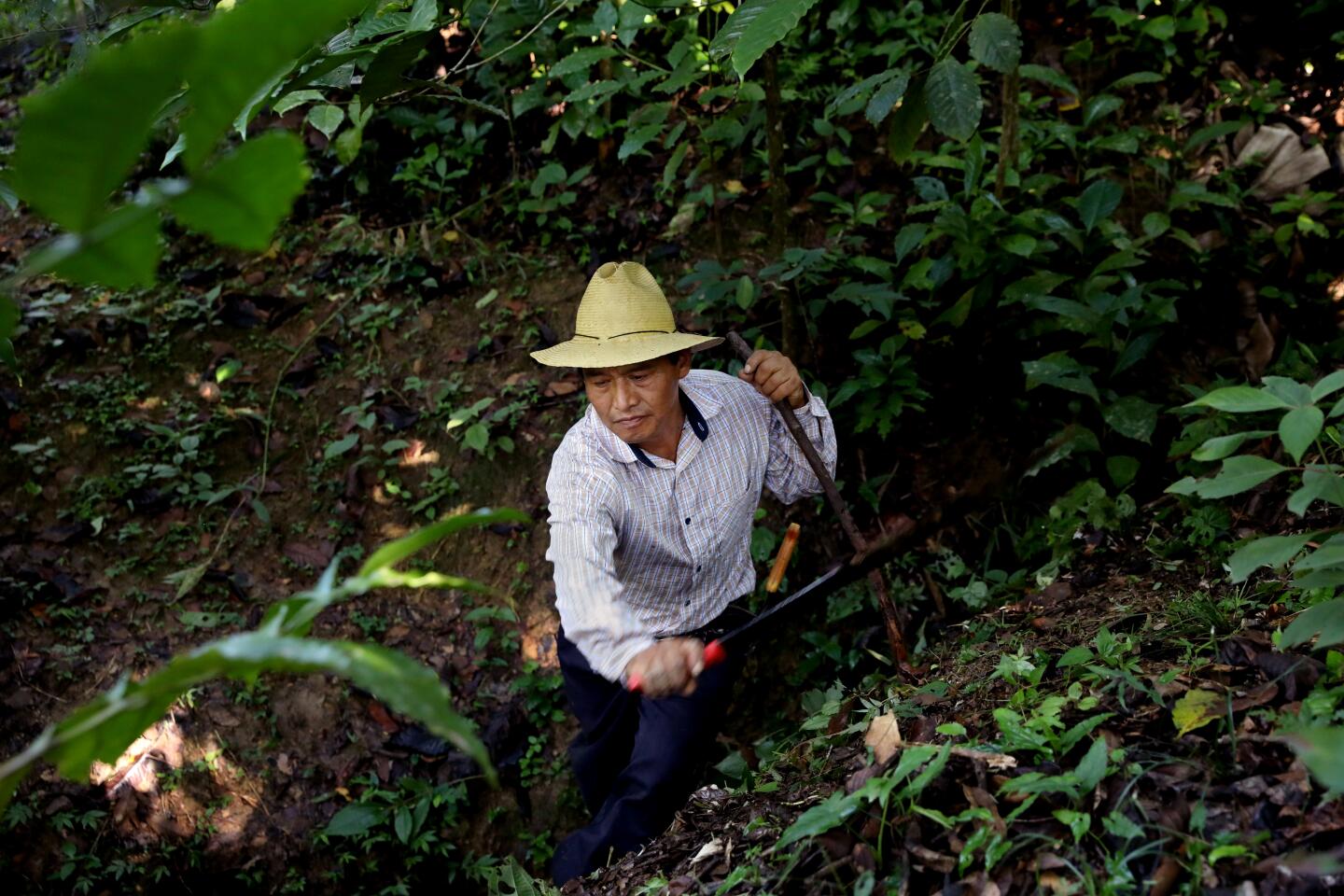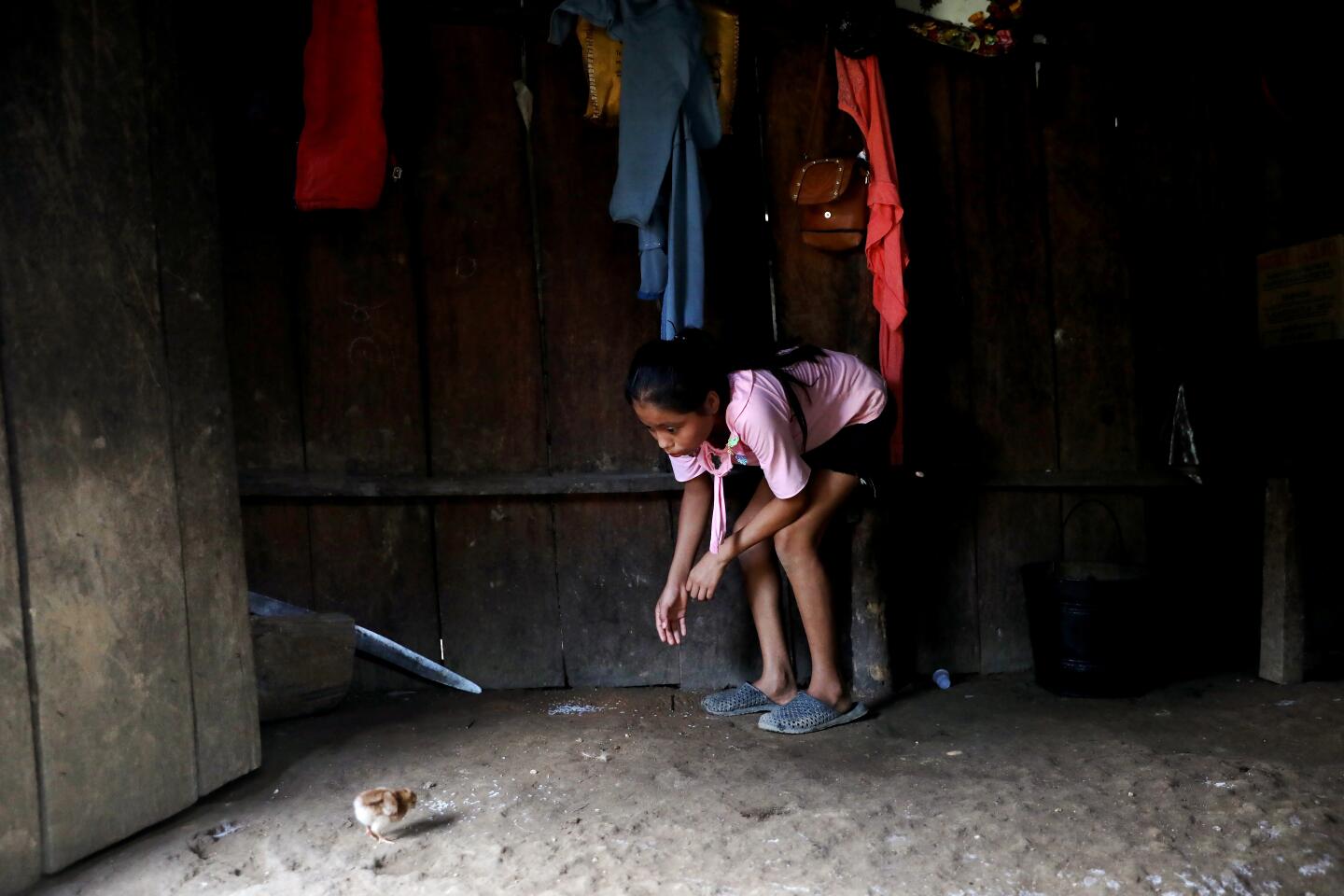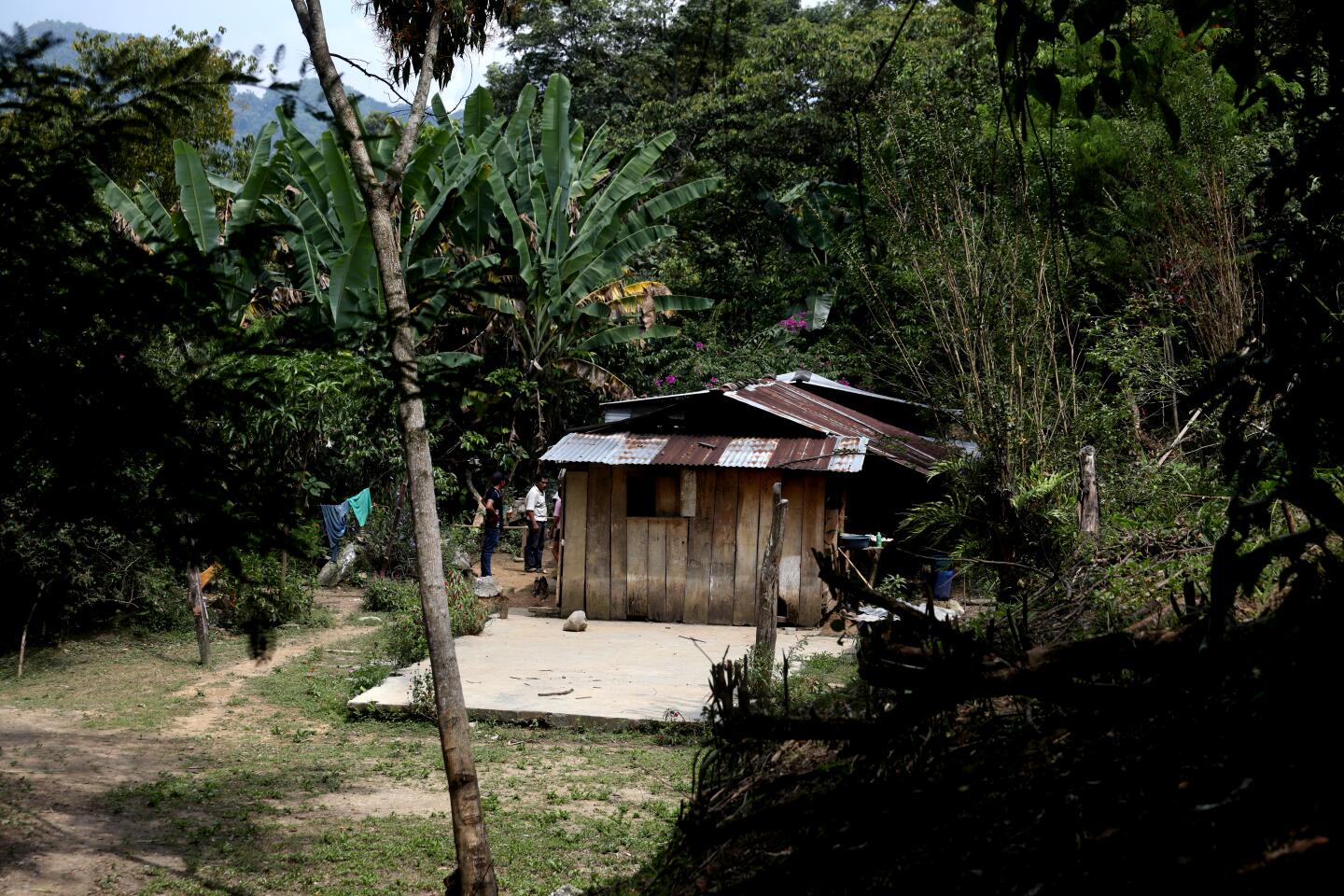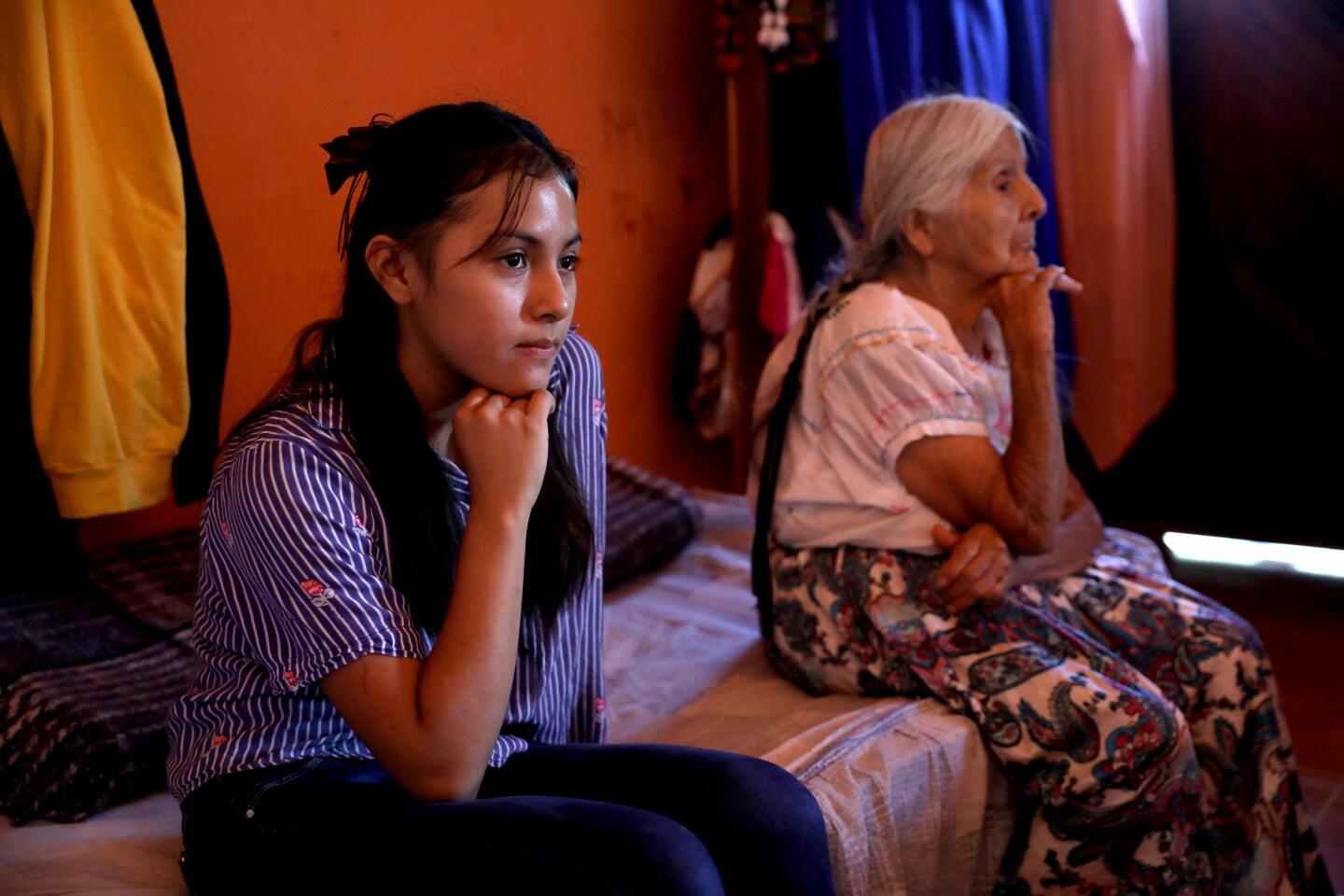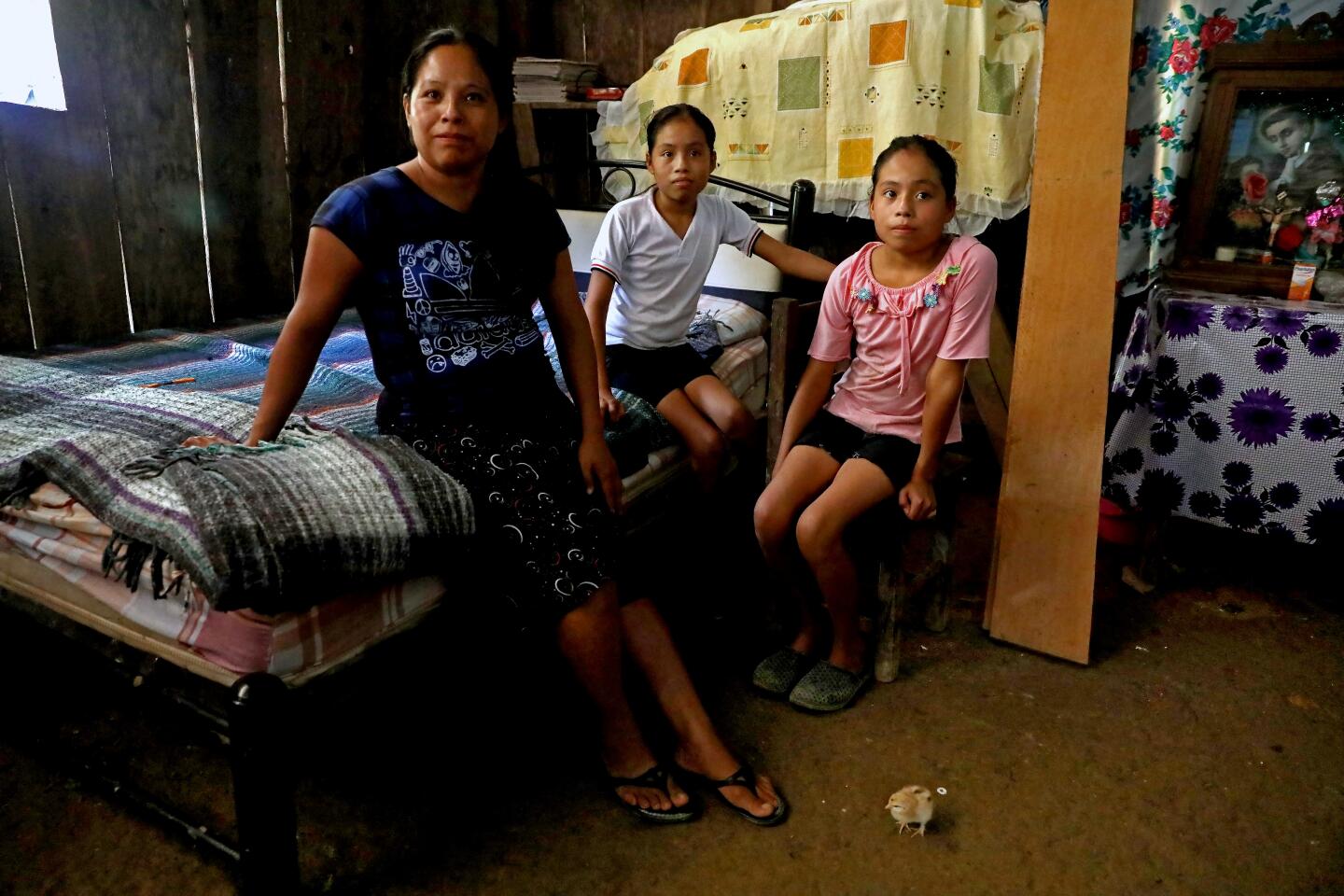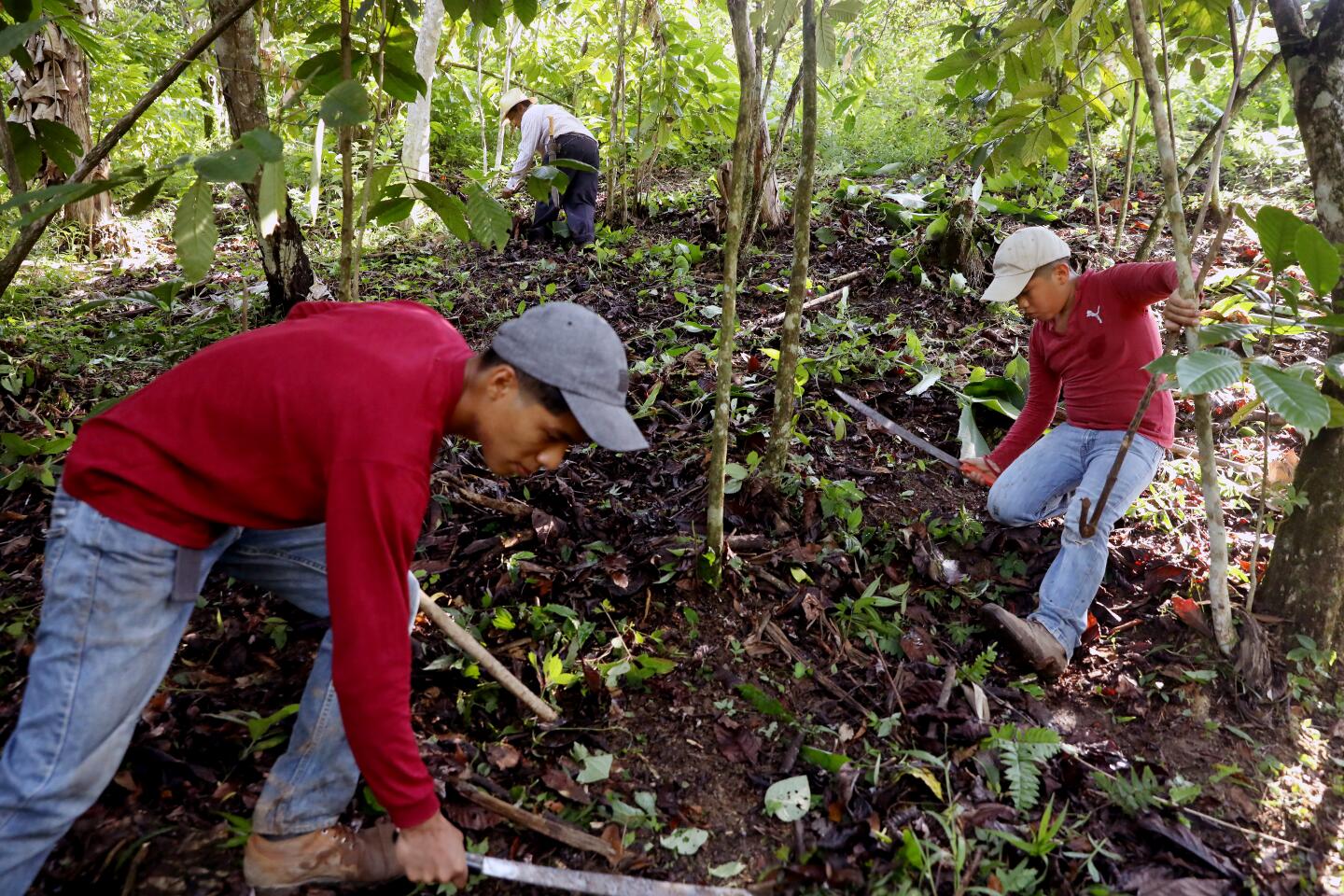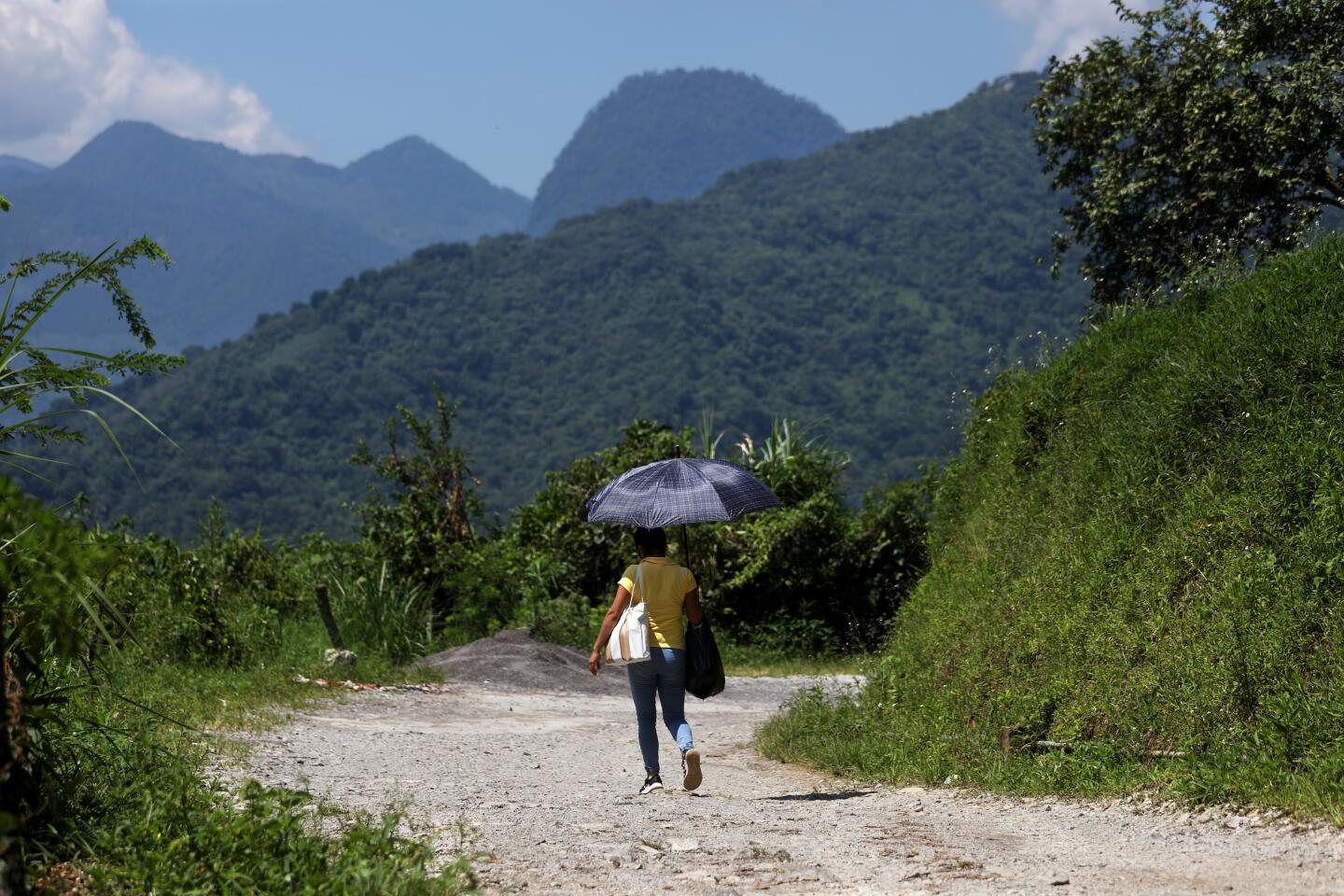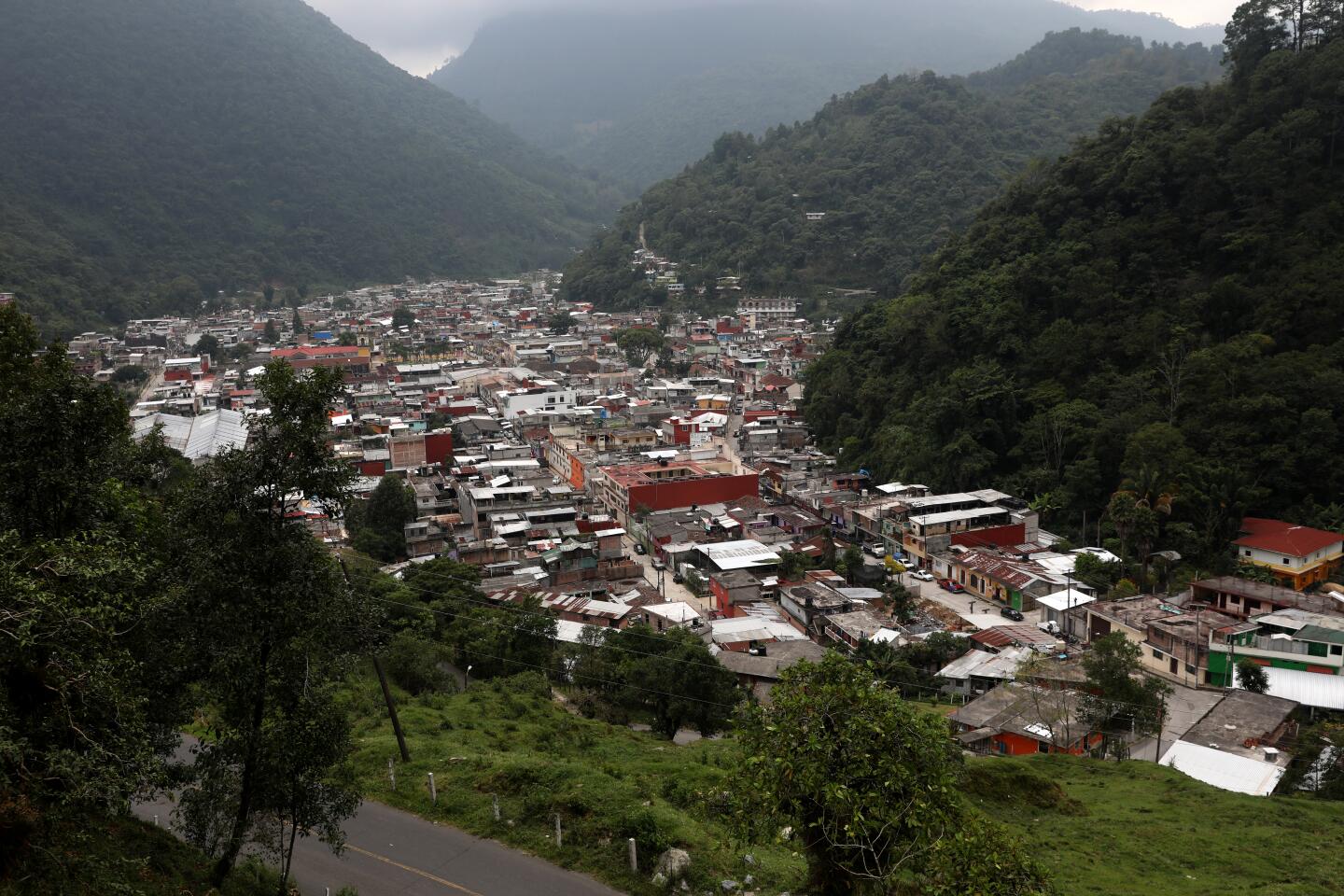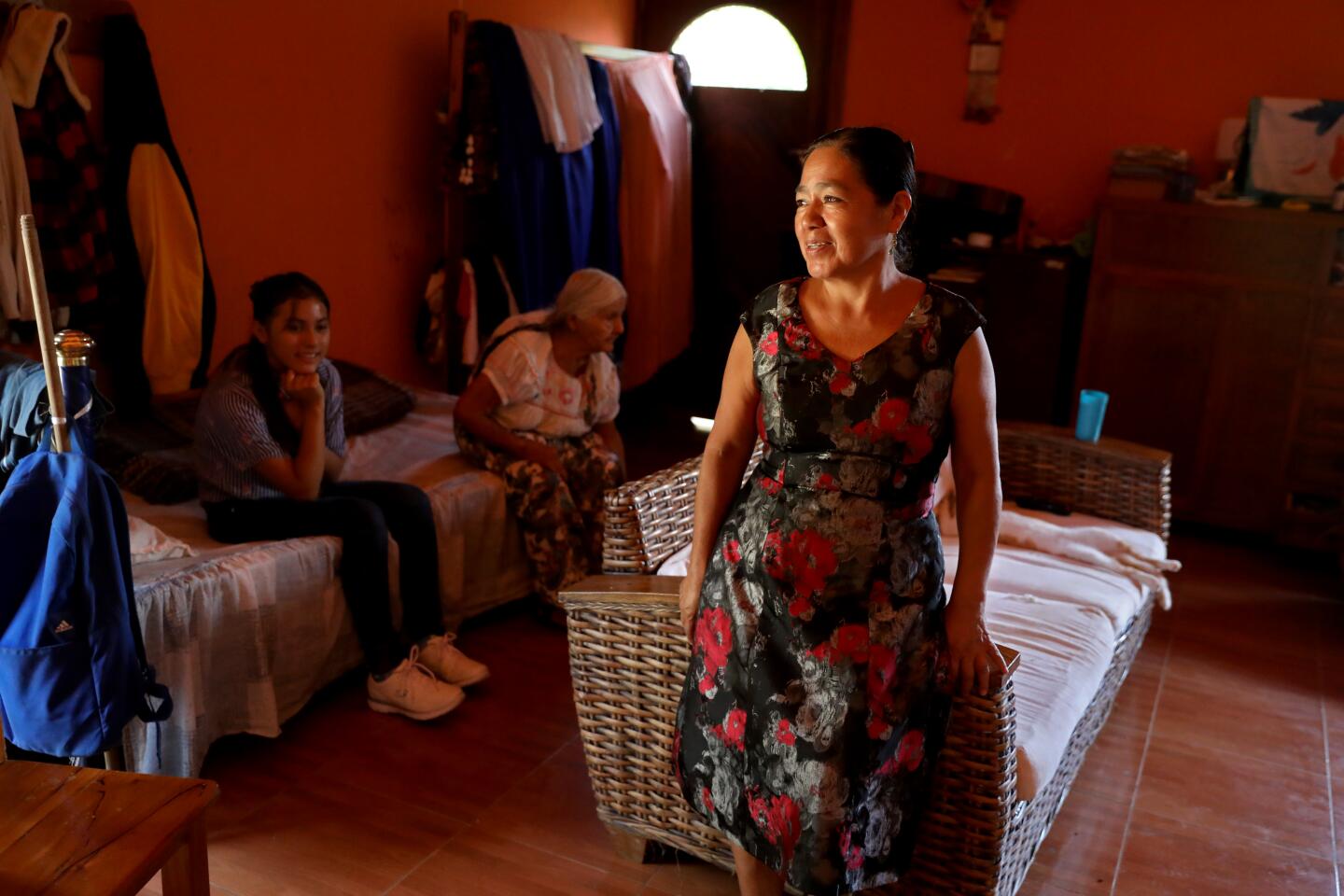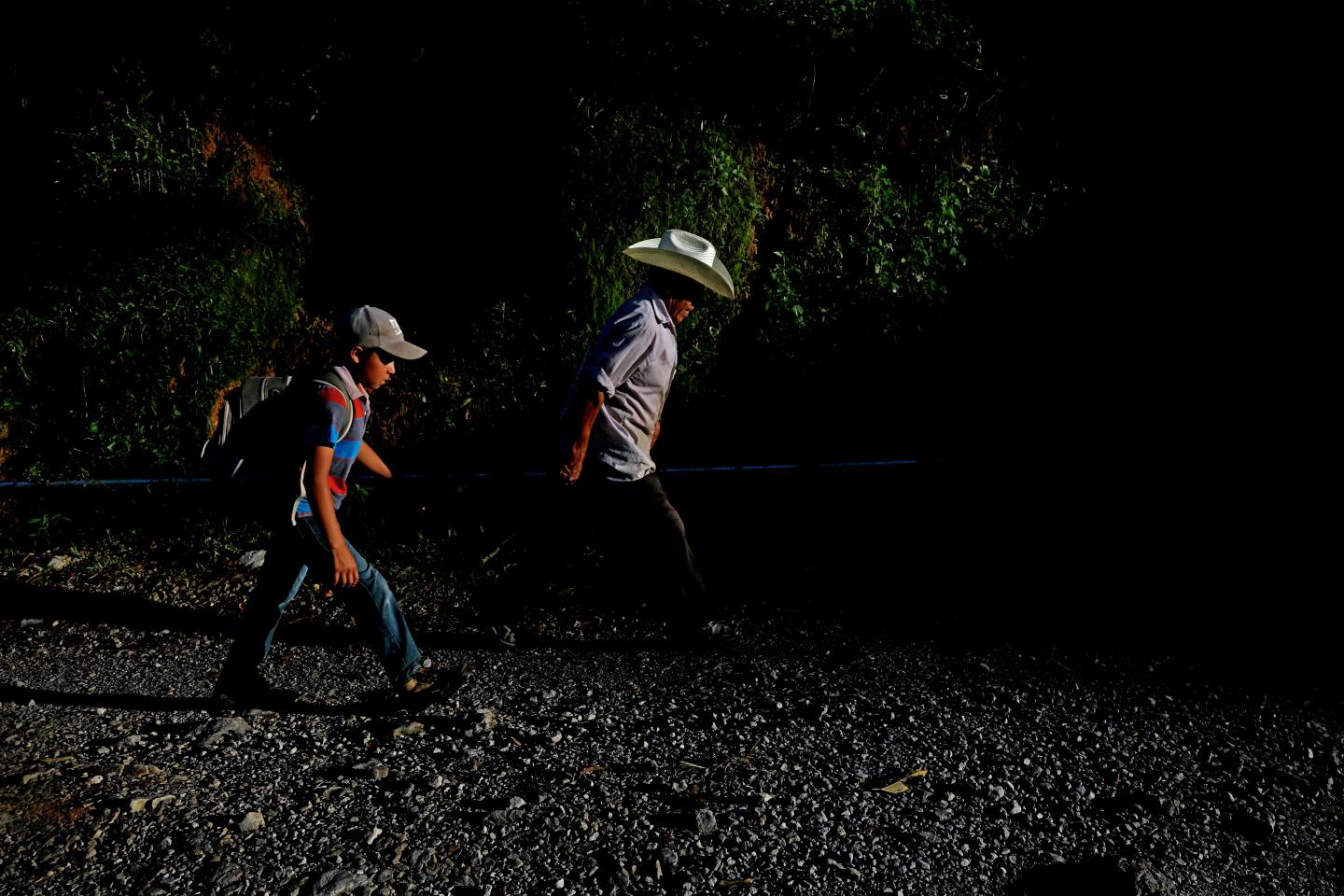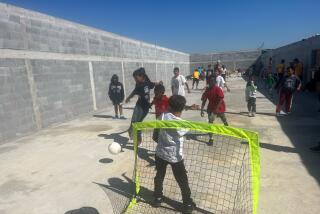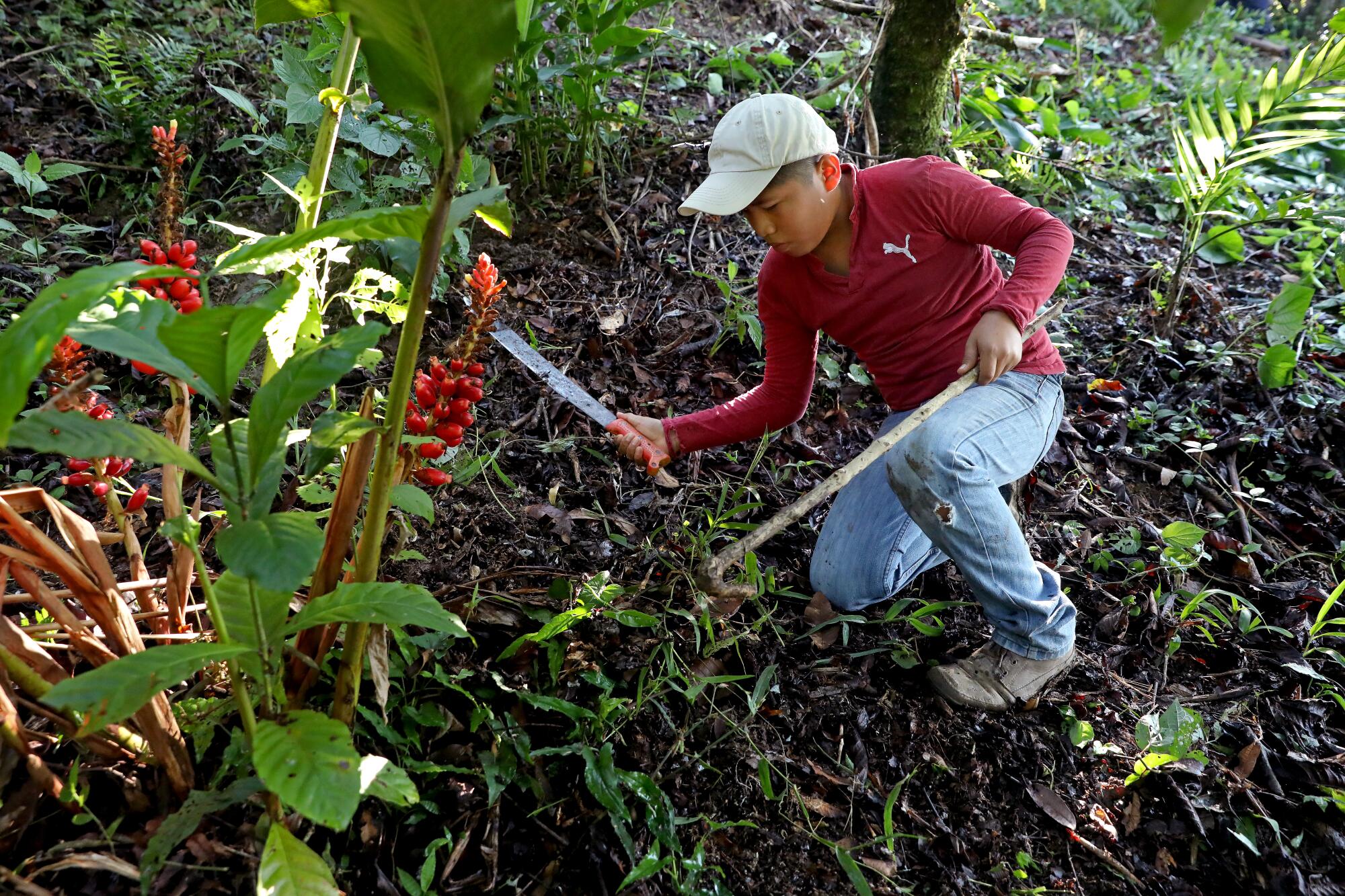
- Share via
ZOMAJAPA, Mexico — This month Bryan Metzhua was supposed to begin seventh grade.
Instead, he woke up each day at sunrise, pulled on a pair of ripped jeans and work boots and began the steep hike toward his father’s field.
The soft-spoken 12-year-old passed his days bent toward the earth whacking weeds with a machete, stopping only to wipe sweat from his brow.
The COVID-19 pandemic has disrupted the lives of children across the world, but it has especially hit those living in poor communities.
With so many families struggling economically, children have become a crucial source of labor, raising the specter that even when schools reopen, many students may never return.
The United Nations predicts that a global recession will reverse a three-decade trend in rising living standards and thrust half a billion people into extreme poverty.
Policymakers are increasingly worried about a lost generation — and a reversal of some of the long-term gains in educational attainment that have brought down birth rates, increased economic output and improved public health across the globe.
Here in the soaring mountains of southern Mexico, a lack of technology makes remote learning all but impossible and an economic recession is forcing many young people into the workforce.
When federal authorities announced this month that they were indefinitely canceling in-person schooling nationwide, they unveiled a program to broadcast academic instruction on television and radio, saying online classes were not an option because roughly 40% of homes lack an internet connection.
Yet 8% of homes — nearly 3 million households — do not have a TV, according to the National Institute of Statistics and Geography, and many don’t have a radio either.
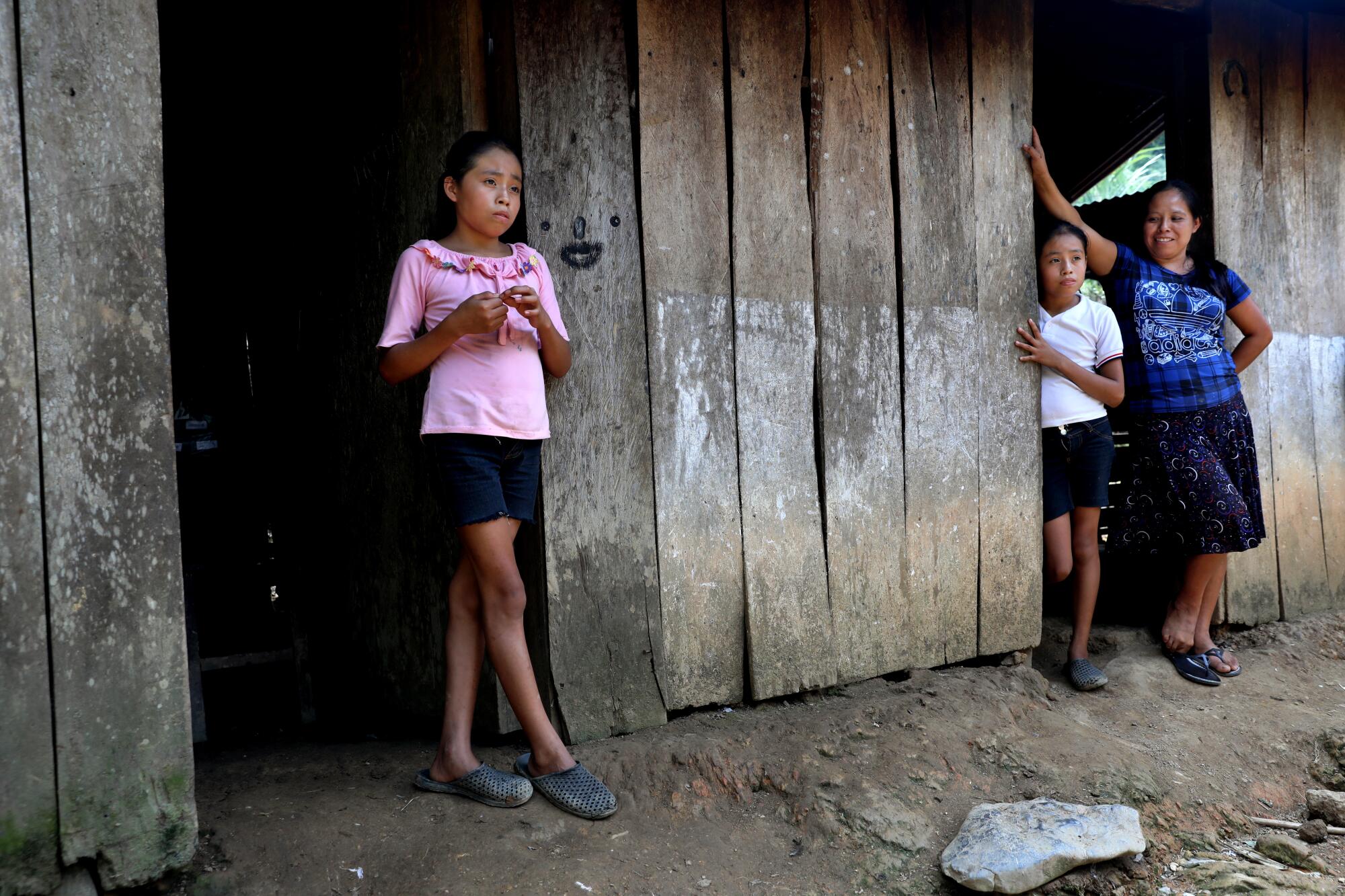
That includes the Metzhua residence, a concrete structure on the side of a winding two-lane highway in Zomajapa, a mostly indigenous town of 600 in Veracruz state.
There is no cell signal in the area and only piecemeal coverage by internet providers.
When the new school year started Monday, Bryan and most of his classmates had no way to tune in. So, many followed their parents to work.
Before the pandemic, Mexico had made important strides in reducing child labor and sending more students to school.
In 2017, 8% of Mexicans ages 5 to 17 were engaged in economic activity, down from 13% a decade earlier, according to the National Institute of Statistics and Geography.
At the same time, the number of people ages 25 to 34 who had completed secondary school rose from 35% in 2008 to 50% in 2018.
Now, teachers and youth advocates complain that authorities are overlooking the fate of the nation’s most vulnerable young people as they seek to contain the virus and rebuild the economy, which contracted 19% in the second quarter of this year compared with the same period in 2019.
“It’s worrying that they aren’t prioritizing this,” said Malcom Aquiles, a policy advocate for World Vision, a Christian aid organization that works with children in Veracruz.
“In the short term we’re going to have a generation of children who are more vulnerable and more poor. Later on, that’s going to have serious consequences for the nation.”
Bryan’s father, José Metzhua, 53, said he would much rather his son spend the coming months learning about history (his favorite subject) or math (which he hates).
But Bryan’s help in the family’s banana, orange and coffee groves has allowed his father to save the $7 a day he would typically spend on outside labor — a big advantage given that virus-related travel restrictions have hampered the family’s ability to sell its products in nearby towns.
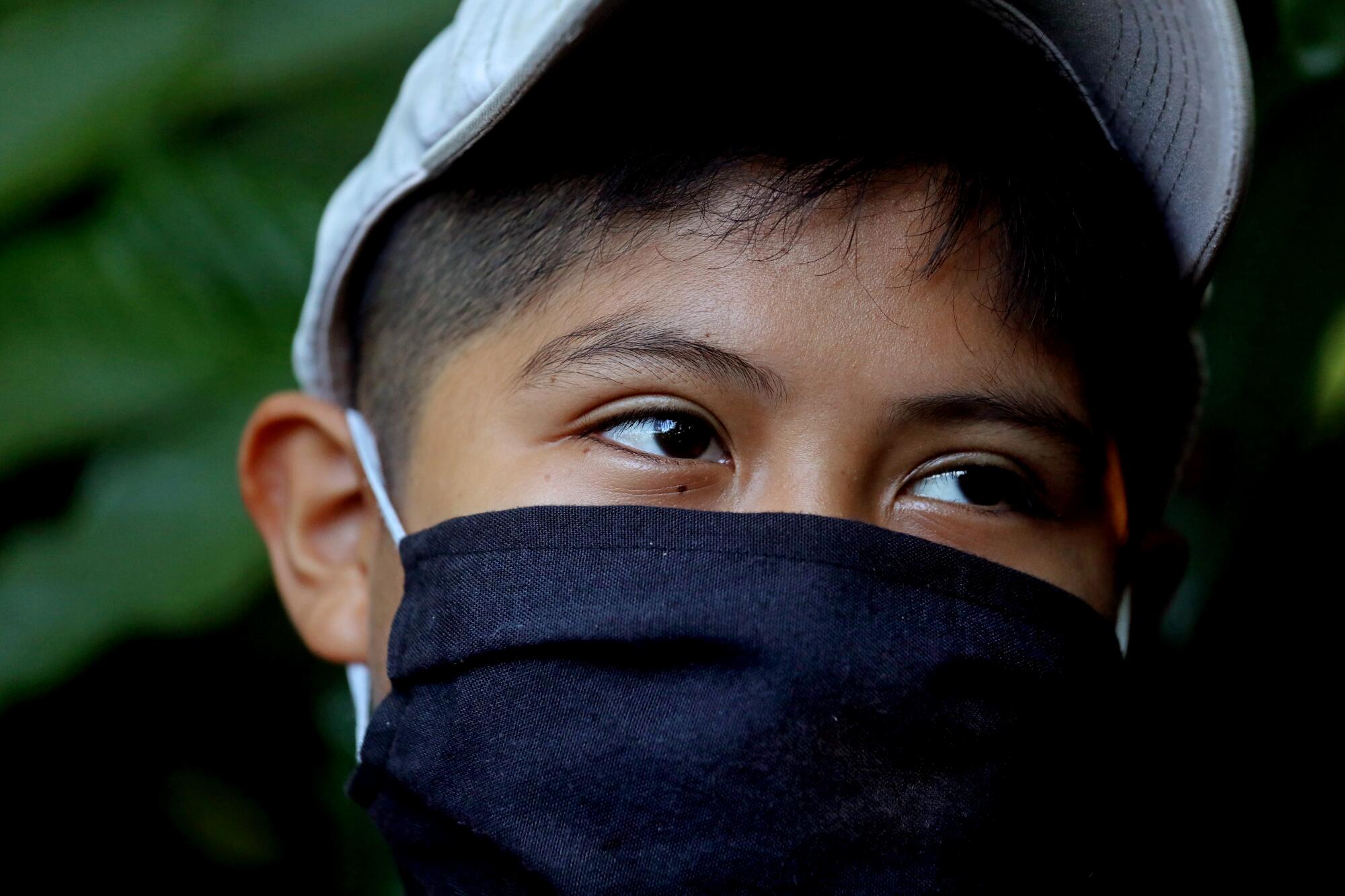
“It’s worrying,” said José Metzhua, a former elected community leader, in a wide-brimmed straw hat. “He won’t be able to study the way he should. But what can we do?”
He and his wife have done their best to home-school Bryan after he finishes in the field, asking him to sit down with a book or to practice writing (“You have to respect the commas and the periods,” his father counsels). But Bryan misses his classmates and his favorite teacher, Doris. “She always made us laugh,” he said.
His parents say they are hampered by their own lack of education: Both left school as young children to help their families, and both struggle to read and write.
Children in households with parents who speak one of Mexico’s dozens of indigenous languages are often at a further disadvantage.
Guadalupe Altamirano González, 34, and her husband, Eustaquio Jiménez, 44, are among the roughly 1.7 million Mexicans who speak a variation of Nahuatl, the language of the Aztecs.
The couple do not have a radio or television — or running water, for that matter — in their two-room wooden home in El Porvenir, a town half an hour from Zomajapa.
Their twin daughters, Alondra and Fátima, have been invited to watch televised classes at a friend’s house. But González worries that she will not be able to answer the questions her 12-year-old girls bring home because she didn’t go to school and doesn’t speak much Spanish.
“It’s not the same as with a teacher,” she said on a recent afternoon as a clutch of newborn chicks circled her feet.
When in-person school was canceled in the spring, the shy, lanky twins began accompanying their parents to work on nearby coffee plantations. Their parents say they will continue to do so on days that they don’t watch classes on TV with their friend.
The couple’s two older sons left school years ago to start earning.
The boys, now 16 and 17, struggled with Spanish instruction and decided making money was more important than studying, their father said.
“They wanted good shoes,” he explained.
Bryan’s family is hopeful that once the pandemic passes, he will be able to return to in-person classes, and even one day go to college.
“That’s the hope,” said his father. “But the truth is that it is hard.”
For now, his father is intent on giving him a different kind of education on the farm, which Bryan and his brothers will one day inherit.
Each day he teaches them something new: The life cycle of an arabica coffee tree, or how to plant the marigolds that will eventually adorn the family’s Día de Muertos altar.
On a recent hot morning, his father stopped to explain how to clear the brush without getting the machete caught in the dirt. Bryan stood there watching, chest heaving.
“Are you tired, Bryan?” one of his brothers called out.
“No,” the child answered, as he crouched down to resume work.
Cecilia Sanchez of The Times’ Mexico City bureau contributed to this report.
More to Read
Sign up for Essential California
The most important California stories and recommendations in your inbox every morning.
You may occasionally receive promotional content from the Los Angeles Times.
